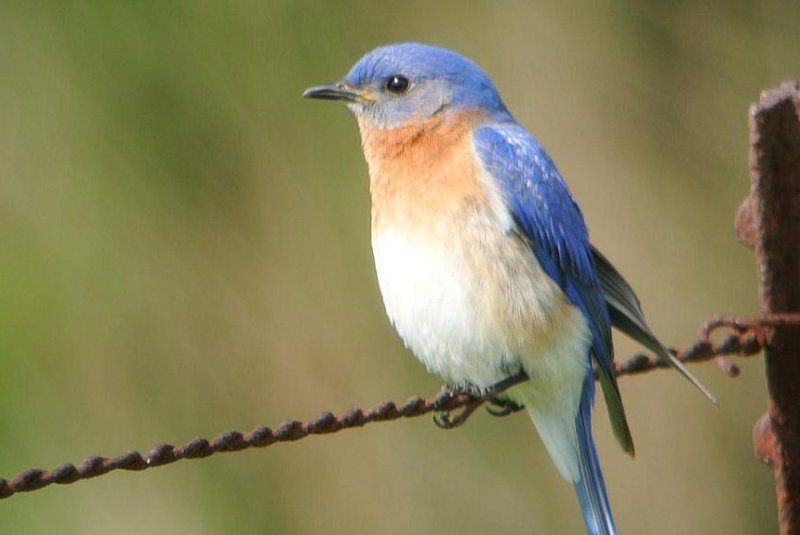The eastern bluebird was once native to the Bahamas. It's now extant there, but remains common in much of North America. Photo by Andy Reago/Chrissy McClarren/UCR
Aug. 29 (UPI) -- New research suggests a pair of songbird species were pushed from the Bahamas by a rapidly warming climate some 12,000 years ago.
Prior to the last glacial-interglacial transition, the eastern bluebird, Sialia sialis, and Hispaniolan crossbill, Loxia megaplaga, were two of 17 songbird species living on the Bahamian islands.
Though now extant in the Bahamas, the pair are the only species still in existence. And the latest research confirms the duo lived among the Bahamian islands full-time.
"The abundance of fossils, the presence of young birds among the fossils, and the evolution of a shorter wingspan in the eastern bluebird all suggest that these birds did not migrate to the island but were a resident population," David Steadman, curator of ornithology at the Florida Museum of Natural History at the University of Florida, said in a news release. "But then they disappeared."
The disappearance of vast majority of species over the last 20,000 years can be blamed on humans -- whether due to overhunting, the conversion of habitat to agricultural lands or the introduction of invasive species. But the eastern bluebird and Hispaniolan crossbill left the Bahamas before humans colonized the islands.
Researchers created climate models to better understand how the Bahamian islands were impacted by the end of the last ice age. Their analysis showed the Bahamas were significantly cooler and drier during the last ice age.
During the last glacial-interglacial transition, however, sea levels rose dramatically as glaciers melted, shrinking the size of the Bahamian islands. The Bahamian climate warmed and became wetter. What was once a habitat and climate hospitable to songbirds, quickly became a much harsher landscape.
"We know from studying these birds today that their habitats are pine grasslands that are found in cooler, dryer regions," said Janet Franklin, a professor of biogeography at the University of California, Riverside. "These habitats were lost when the Bahamian Islands became more tropical."
The latest findings -- detailed this week in the journal PNAS -- offer a preview of the fate of other species should global warming continue unabated.
"Anthropogenic climate change and resulting sea level rise are now happening much more rapidly than at the transition from the last ice age to the modern global climate," Franklin said. "Species and ecosystems do not have time to adjust, especially when climate change is happening in a world where people have transformed the face of the planet in other ways, through deforestation and so forth."















